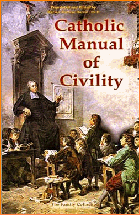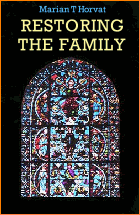Movie Review
 |
 |
 |
 |
 |
 |
 |
The Shoes of the Fisherman
Prepared for the Poor Church
Directed by Michael Anderson, 1968 film
Tesa Becica
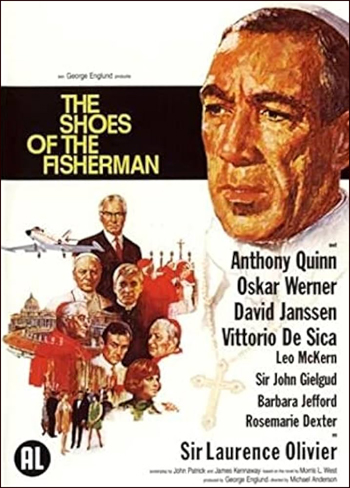
What propped up the film was the list of popular stars, all big names and box office draws in that time:
- Anthony Quinn as Metropolitan Kiril Lakota, who has been in the Russian Gulag for 20 years, and becomes the surprise Slavic Pope from behind the Iron Curtain (like
JPII in 1978 when he became the first non-Italian Pope in 400 years);
- Sir Lawrence Olivier as the communist Russian premier, who frees Arch. Kiril and sends him to Rome so he can “tell the truth about Pietr Ilych Kamenev (himself) and his Russia”;
- David Janssen as the U.S. reporter George Faber in Rome; Oskar Werner as Fr. David Telemond, Barbara Jefford as Dr. Ruth Faber, Vittorio de Sica as Cardinal Rinaldi, Leo McKern as the conservative Cardinal Leone, etc.

Reporter George Faber, the ‘respectable’ U.S. reporter in Rome who is having a public love affair
Upon arriving in Rome, Lakota is whisked off to meet with the Pope who makes him a Cardinal and assigns him to work in the Secretariat of State in Russian affairs. Arch. Lakota tries to refuse, but the Pope insists: Kiril Lakota had not denied the Faith even when the communist tried to force him to do so by executing seven priests in his presence. Kiril Lakota should be rewarded.
The controversial Fr. David Telemand, representing Teilhard de Chardin, is presented sympathetically as a fervent believer in a higher truth that evolves with the times, a message the Catholics of the 1970s were very open to accept.
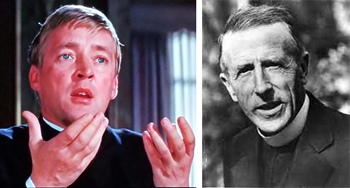
The passionate theologian Fr. Telemand is clearly representing Teilhard de Chardin
During that investigation, a priest disrupts them with the news that the Pope has collapsed. The Vicar of Rome soon dies, and a conclave is called. Here is displayed a panoply of ritual, the pomp and beauty of Tradition. We are shown in beautiful cinematology the defacing and breaking of the papal ring, the solemn sealing of the Pope’s chamber doors with a wax seal, the soberness and silence of the cardinals as they process into St. Peter’s under the eyes of the solemn Swiss Guards. Everything is ceremonial, beautiful, intensely sacral.
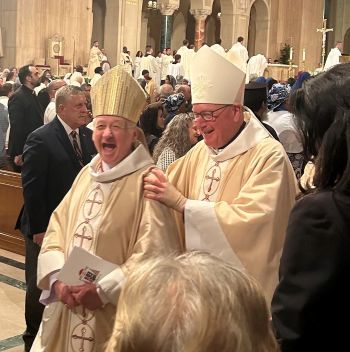
Cards. Blase Cupich & Timothy Dolan at the March 2025 installation Mass of Card. Robert McElroy.
During a break in the conclave, Card. Lakota reveals his red hues, telling a group of shocked Cardinals: “We should manufacture the authentic Christian Revolution: work for all, bread for all, dignity for all men.” Further, Lakota doesn’t preclude violence, saying he “might be forced to accept violence as a price for social change.” It is the gospel of Liberation Theology that will be preached everywhere soon, here presented in an attractive way to an unsuspecting public. Today, we can read the letters between the lines. Then almost no one could.
Naturally, Card. Lakota is advanced as a candidate after several days of fruitless voting. The humble Russian Cardinal refuses initially, but reluctantly acquiesces and becomes Pope, introducing a novelty by keeping his own name, Kiril. The scene is actually very moving, as are others where the dignified and somber traditions are portrayed. But beneath appearances lurks the progressivist spirit of what is to be ushered into the Holy Church in the name of change, openness and Vatican II
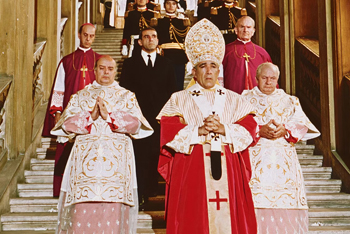
The movie has many beautiful scenes of solemn ceremony
The new Pope hates the “sensation of being managed... I need time to think, to pray.” Pope Kiril solves this by secretly acquiring a priest’s cassock, which he dons not to find a quiet corner to pray, but rather to sneak out of the Vatican to mingle with the common people. He comes upon the journalist’s wife out on a house call, and joins her in the sick man’s room, and starts to pray for the dying patient.
He is informed by a relative that the man is Jewish, “like most of us are here,” whereupon Lakota immediately covers his face and begins chanting a prayer in Hebrew, in which the others join him. He confesses that he learned Hebrew from a rabbi in the Gulag.
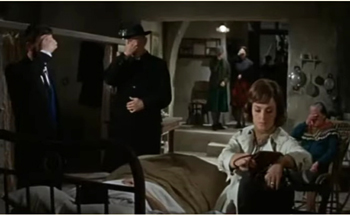
The Pope dressed as a priest prays Jewish prayers at the bedside of a dying Jew
In the meantime, the inquisitorial commission questions Fr. David, who explains the foundation for the new humanist thinking. He responds to the question “What do you believe?” with these Teilhardian words: “If I lost my faith in God, in Christ, and in the Spirit, I think I would still believe in the world. Yes, I do believe in the world, in the goodness of the world, in the values of the world. That in the final analysis is the first and the last thing in which I believe.”
The meeting with China & Russia
We learn early in the film that China is having a severe famine and has readied troops to invade Russia and most of Asia. The USA has deployed nuclear craft as a counterbalance. The Russian Premier sends an agent to Pope Kiril, who asks him to meet secretly with the Chinese Communist Chairman Peng and the Russian dictator to act as an intermediary for peace.
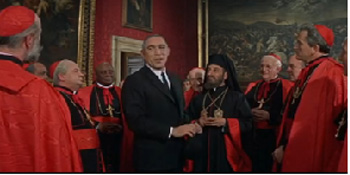
Pope Kyril dons a suit to fit in better at the meeting with Russia & China, below
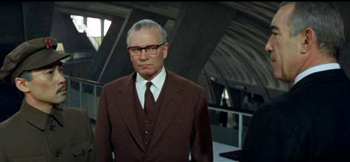
To resolve the problem of a nuclear war set off by China, Kiril decides to do more than merely be a strong voice pleading for help from the Western leaders and capitalists. He makes the decision to prove his love for suffering humanity and his hatred for war by selling off all of the Church treasures to give to the poor and starving people of China.
On his return to Rome, he meets with firm opposition from his close advisors, and thus offers to abdicate. But before that can happen, the conservative Card. Leone changes his position and avers, “This is Peter.” Immediately all follow his example in the name of obedience. It is ironic that it is the conservative who saves the day for the progressivist agenda to make the Church poor and cause the auto-destruction of the Catholic Church with all her beauty and richness.
Kiril breaks the news of his decision to sell Church property at the regal ceremony of his installation when he goes to balcony of St. Peters’ Basilica to be acclaimed by the people. After being crowned with the triple tiara, he removes the crown, explaining to the puzzled throngs below: “I stand before you bareheaded because I am your servant.” Another example of seeming humility, which is really a renunciation of the all important symbolism of his servitude. In fact, Paul VI had actually made this renunciation of the tiara in November of 1964, a sign of his rejection of the monarchical structure of the Church.
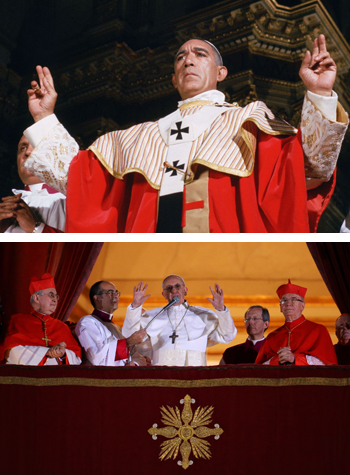
The ‘humble’ Kyril has many points in common with the ‘humble’ Francis
His tiara removed, Pope Kiril blesses the crowd and then announces: “I am the custodian of the wealth of the Church. I pledge it now, all our money, all our holdings, land, buildings, and works of art for the relief of our hungry brothers.”
The people erupt with great enthusiasm at his words, and tears appear in Kiril’s eyes. His plan has been accepted by the people. Liberals loved the gesture then, today progressivists watching the movie will praise it, but this so-called magnanimity will not solve the problem of world hunger. When Judas proposed to sell Magdalene perfume to give the money to the poor, Christ said: “The poor you will have with you always” (Mk 14:7).
On the other hand, God has outlined in the Bible how we are to worship Him in “holy attire” (Ps 96:9). He gave very specific instruction as to how to build the Temple with precious metals and the finest woods. He commended Mary Magdalene for using that expensive perfume to wash His feet.
While we are commanded to care for the less fortunate, we still need to give glory to God both materially and spiritually. The Church of the Middle Ages provides a blueprint of how Church and society worked together to integrate all the peoples and classes: It was mainly the monasteries, religious orders and hospitals that cared for the poor.
I would not recommend this movie as it pushes Progressivism by working on the emotions and feeding the progressivist ecumenical and tolerant spirit that has overtaken the Catholic Church since Vatican II.

Posted May 12, 2025
______________________
______________________



